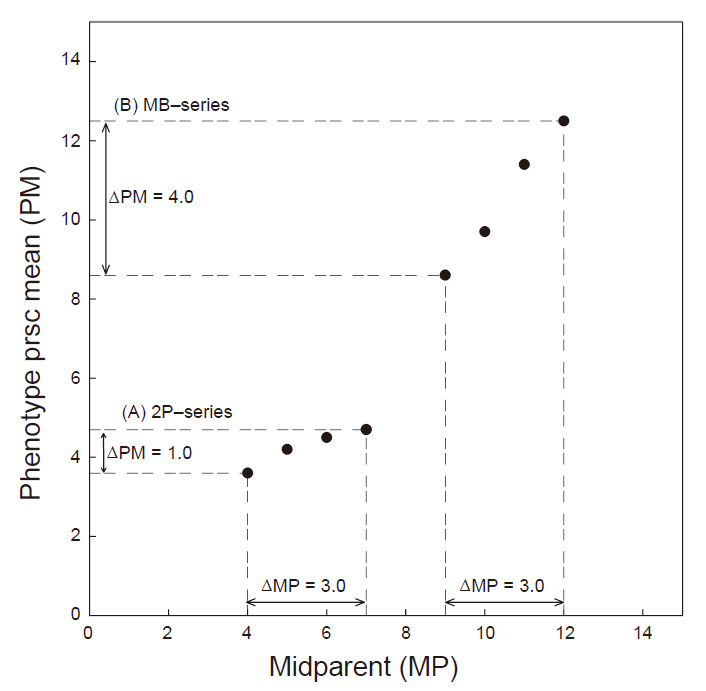All issues

Author:Edward Yun Cheng, Zu-Hsien Wang, Yu-Bing Huang*, Ming-Yaw Chiang, Hsiu-Ying Lu, Dong-Hong Wu, Chung-Min Yang, and Chun-Chi Nien
Abstract:
The number of prescutellar bristles (prsc) in melon fly, Bactrocera (Zeugocacus) cucurbitae (Coquillett), is quantitative genetic controlled. The polygenic characters are usually expressed in the continuous traits, but the prsc polymorphism in melon flies are limited to only two phenotypes, 2 prsc phenotype (2PHT) and 4 prsc phenotype (4PHT) at 95% and 5% of the field population, respectively. How a single phenotype dominated a complete prsc trait in genetics and this phenotype happen to have the fewest prsc number among all phenotypes, and how the prsc variability is reduced may be the first question to be studied. A multiple prsc (MB) strain with 6 to 19 prsc bristles and operated only on additive quantitative genetics has been chosen to compare the prsc variability of 2PHT. Both 2PHT and 12PHT were separately single paired with 6, 8, 10, and 12 prsc phenotypes in two serial crosses and the prsc phenotypes of their progeny were analyzed for possible clues. In 2PHT serial crosses, the prsc mean (PM) varied from 3.6 to 4.7 in a 4–8 prsc midparent (MP) window, the biological buffering effect replaced the additive variation of quantitative genetics, as the variation of PM is buffered within 1.1 prsc. In MB series, within a MP window of 9–12 prsc, the PM varied additively from 8.5 to 12.0 prsc without prsc number reduction. The buffering and additive effect of prsc with respected to 2PHT and 12PHT serial crosses were illustrated in the PM–MP map (modified from the genotype-phenotype map or G-P map). The comparative study confirmed that 2PHT is the genetic source of prsc variability reduction. By the backcross tests of 2PHT progeny, the heritability and the cumulative effect of prsc reduction were observed. A simulation of random mating between 2PHT and MB strain was conducted, 2PHT and MB strains mated freely and the reproductive advantage was estimated at 3/2 for 2PHT, another possible factor in reducing the prsc number and variability. Once MB strain mated with 2PHT, the prsc variability reduction could be functional in stabilizing selection for generations, as the observation of four generations of sibling mating, the PM lowered from 4.9 to 3.2, the variance lowered from 15.0 to 2.7, and prsc phenotype trait shortened from 19 to 11 bristles.
Key words:Quantitative genetic, Prescutellar bristle, Melon fly
Download:![]() PDF Links
PDF Links
- 1. Development of Tractor-Mounted Seedling Transplanter for Sweet Potato
- 2. Synergistic Effect of Additional Gas on the Toxicity of Phosphine to Sitophilus oryzae and Sitophilus zeamais (Coleoptera: Dryophthoridae)
- 3. Effects of Temperature and Solar Radiation on Growth Traits and Plant Elements in Purple Leafy Sweet Potato
 Submit your manuscript
Submit your manuscript
 Guide for authors
Guide for authors